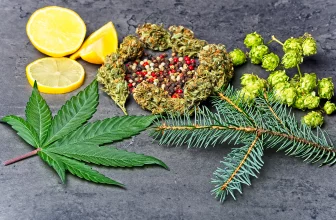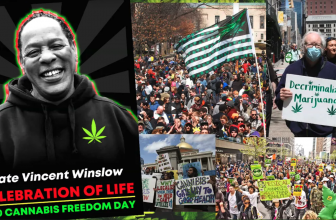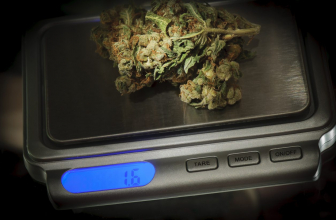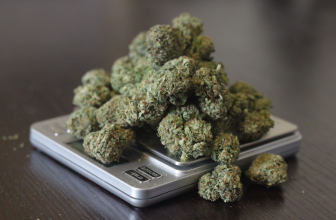
The history of cannabis didn’t begin with marijuana legalization in the U.S. Today’s marijuana industry is just a blip on the radar. But it’s through the efforts of thousands of activists and scientists who have made it all happen.
Our history of getting high dates back thousands of years. So, if you’re interested in where the long lineage of today’s cannabis brands, here’s an in-depth look at marijuana’s misty origins.
Ancient Origins of the History of Cannabis
Where do we begin when answering what is cannabis and where does it come from?
Unfortunately, this is the first point of contention. Although cannabis was attested to as early as 12,000 years ago in the Altai Mountains of Central Asia, we don’t actually have any physical evidence of it being used from back then.
Instead, we do know that hemp, which comes from the same plant species as your zip of weed, was used for making fabrics and ropes during the Neolithic era in Japan and China, around 10,000-7,500 BC.
So, when did we start smoking up?
On this, we do have evidence of the burning of cannabis from 3,500 BC in what is today Romania in Europe. Although, some scholars argue that it was used for ritual purposes by tribes a couple of thousand years earlier in Ukraine and Southern Russia.
There’s also evidence from the historian Herodotus in the 5th century BC that the ancient Assyrians and Iranians used it in religious ceremonies. It was known as qunubu in their language, which translates to “way to produce smoke.”
It’s quite possible that qunubu is the original form of the word “cannabis.”
Shamanistic History of Cannabis
The history of cannabis may have begun in China and Central Asia, but it still had to migrate to Europe and beyond.
Historians believe that many cultures were responsible for introducing cannabis to Europe, including the Thracians, Dacians, and Scythians.
Shamans, known as kapnobatai, or “those who walk on smoke,” would burn cannabis with fruit to send themselves into a trance.
We know that this is little more than using a cannabis strain to get high, but there was no CBD dosage calculator back then, so the best shamans were likely those who took higher dosages.
But, of course, we are still uncovering the history of cannabis, meaning there are still massive holes to be filled.
Recreational Weed Use
As history advanced, people would inevitably begin to use weed recreationally in the same way as shrooms.
Most historians claim the rise in recreational weed usage matched the growth of Islam across the Middle East, Asia, and North Africa. Even though the Quran forbade a range of substances, cannabis was never mentioned.
At this time, hashish would have been the mechanism of choice. But since edible recipes weren’t yet understood or prohibited, cannabis would be used worldwide for centuries, especially within the pharmaceutical industry.
So, when did harmful cannabis marketing target marijuana, and why?
Prohibition of Marijuana
The prohibition of marijuana is nothing more than a blip in the history of cannabis. Cannabis was initially introduced to the U.S. by Mexican immigrants fleeing the years of the Mexican Revolution.
In the beginning, there were no problems. It was only during the years of the Great Depression, when economic conditions worsened, that campaigns against Mexican immigrants began.
Unfortunately, this hatred of Mexican immigrants resulted in cannabis also falling prey to a manufactured moral panic. It would also be lumped into the Prohibition era’s fight against anything intoxicating.
On a side note, this is where the term “marijuana” comes from. Some genius came up with the word because it rhymed with “Tijuana,” the Mexican border city that was a popular jumping-off point for immigrants even then.
By 1931, 29 states had banned cannabis in all its forms.
Tightening the Screw on Cannabis
Despite this, the federal government wouldn’t act until the cusp of World War Two. The first piece of legislation was the Marijuana Tax Act of 1937.
Even though the act appeared to do nothing more than introduce an excise tax for possessing, selling, and transferring hemp products, it effectively criminalized anything outside industrial hemp plant use.
Farmer Samuel Caldwell, aged 58, became the Act’s first victim one day after it passed. He was given four years of hard labor for selling weed.
The final hemp fields in the U.S. were planted in 1957 in Wisconsin, but, for now, domestic hemp cultivation was in the doldrums.
The History of Cannabis and the War on Drugs
Young people today may believe the War on Drugs began with George W. Bush in the 21st century, like the War on Terror, but its origins go back a lot further.
We can trace the end of any hopes of recreational marijuana legalization back to Richard Nixon’s administration.
In 1970, Nixon signed the Controlled Substances Act, which listed marijuana as a Schedule I Drug. Under this act, marijuana was viewed legally as identical to heroin and LSD. And that’s where the “Gateway Drug” lie comes from.
Believe it or not, this Act remains the guiding light for federal drug policy even today. Crazy, right?
Common Sense Prevails – Legalization on the Cards
Regardless of the evidence, U.S. drug policy continues in the same vein today. Even though we know cannabis is linked to reduced opioid cravings and that there are such things as the best weed strains for pain, this made no difference in the late 20th century.
Only California’s Compassionate Use Act of 1996 made people stop and think about the potential for cannabis being a good thing. And that’s led to gradually rescinding older state laws outlawing marijuana.
Yet the federal government has shown no signs of relenting, even though medical cannabis is legal in all but five states, and two-thirds of states have legalized marijuana for recreational purposes.
Conclusion
Marijuana has a long and storied history that crosses cultures and eras. It’s only recently that legal cannabis conferences have begun to pop up, and cannabis tourism is now a real thing.
Although governments have resisted marijuana’s rise at every turn, public perceptions have shifted, which can only be good. At Flavor Fix, we’re dedicated to educating people about weed’s benefits and guiding those looking to experience a new flavor for the first time.
Browse the Flavor Fix hub to learn more about the diverse and varied world of marijuana.






